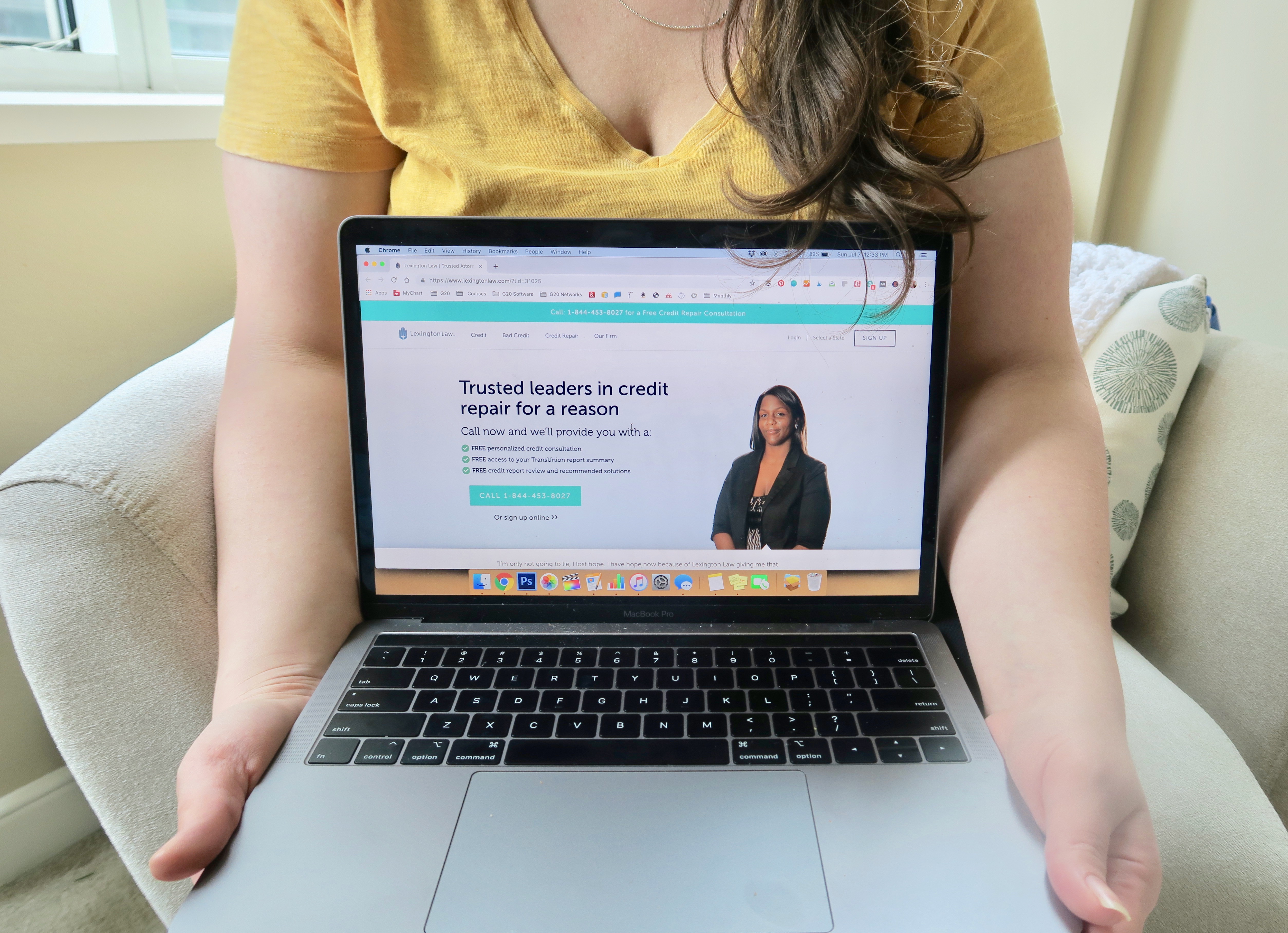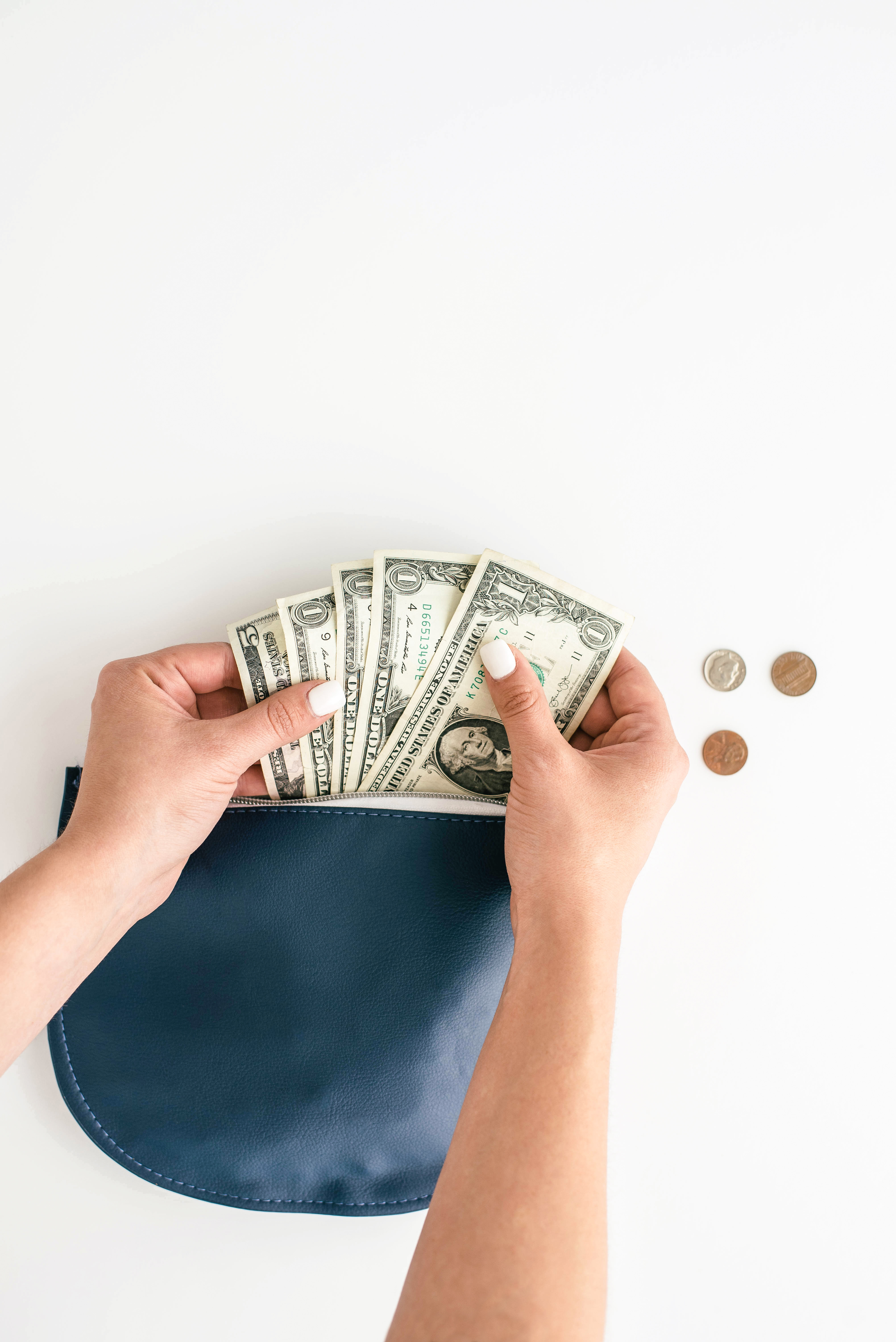This post is sponsored by Lexington Law.

Yup, that’s not a typo. My husband and I really do save 60 percent of our income. This didn’t just happen overnight, though. We haven’t always saved that percentage (and also might not do so in the future either as our incomes, expenses, and financial goals change).
To give a little background, we are a dual-income household with one child and no current childcare expenses. We are both almost eight years into our careers. There are many, many choices and lessons we learned over the years and strategies that we use to not spend our money and invest it instead.
Following these methods below and prioritizing our savings has not only given us financial confidence but a myriad of other amazingly positive benefits as well.
For starters, we both have excellent credit scores (both are over 800!) which is giving us so much financial freedom and choice as we search for a house this year. We have always prioritized our credit scores (even after my identity was stolen) next to our savings.
Saving more money has meant that we are able to keep our credit utilization ratios low (which makes up 30 percent of your credit score). It also means that we are able to tame our spending and not overspend which means we can always make our payments on time (35 percent of your credit score). It gives us financial freedom to know that our bills our covered and our emergency fund is full which also provides us with peace of mind and reduces our stress levels.
It’s always worth the effort to repair your credit. Our world moves on credit and the higher your credit score, the lower your interest rates will be which means you’ll pay less money over time when you need to finances anything. If you have questions about credit repair, I recommend reaching out to the credit repair consultants at Lexington Law for a free consultation.

5 Strategies We Use To Save 60 Percent Of Our Income
1. We set up automatic transfers.
This is one major key to having such a high savings rate. But I also think that it’s important to use this strategy to build up any kind of savings.
Having automatic transfers set up means you’re moving the money out of your available spending money before you even have the chance to spend it. Even when we were paying off our student loans, we still had automatic transfers set up to build up our emergency fund.
This is a habit you build up over time. Start with $50-$100/paycheck (or whatever number makes sense for your finances). After six months, double that number. Then after a year, add another $50-$100. Doing this slowly allows you to adjust your spending without feeling like it’s a major strain on your monthly finances. But you’ll end up with thousands of dollars in savings!
Once that money is in savings, you can use it as your emergency fund or put it towards a down payment on a house if you choose. Or maybe you’ll just keep saving and investing it!
Truthfully, we save money to eventually spend it. What you are saving for retirement right now will one day be spent on your retirement (if all goes to plan). What you’re saving for your vacation will be spent on plane tickets and memories. What you’re saving for your emergency fund (will hopefully not ever need to be spent for it’s intended purpose) but will eventually most likely be rolled into something else like maybe a charitable donation or funeral expenses when you don’t need it anymore.
But money in savings keeps us from having to dip into emergency lines of credit or financing huge loans for a home or car if we don’t have to. All of these things have positive implications in our financial lives because they work together to give us financial freedom.

2. We keep our fixed expenses as low as we can.
I know you’ve heard of the 50/30/20 budgeting rule. This is where 50 percent of your income goes to fixed expenses, 30 to variable expenses, and 20 into savings. I always advocate that you should keep the fixed expenses as low as possible. Don’t just pay more for something you have to pay a fixed amount for every month just because you can afford it on paper. Save that money for the future instead.
We use approximately 15 percent of our income for fixed expenses. We do expect this to change this year though as our son will be attending daycare a few days per week which is going to cost a pretty penny (roughly $26,000).
Again, we are a dual income household that hasn’t had many major expenses during the past eight years. Because our fixed expenses come in at 35 percent below the *recommended* amount we are able to put the rest of that into savings. We could easily spend that 35 percent to live in a fancier place, but we choose not to. We are also lucky to be able to have that choice but living smaller at this point in our lives is a choice we decided to make long ago.
If you can choose to have a lower rent payment, mortgage, car payment, etc. — do it! Unless it’s putting you or your family in danger or truly ruining your quality of life, the extra money will be more worth it in the long run. It’s a temporary situation on the way to financial freedom.
[Tweet “Keeping your fixed expenses as low as you can will help you save more money.”]
3. We eliminated our debt as quickly as possible.
I’ve mentioned this before but the one strategy that actually helped us make a dent in our debt was doubling and tripling our payments. We were able to do this when our rent alone was actually closer to 36 percent of our income (not to mention the debt payments which pushed our fixed expenses over 50 percent at the time).
I cried every time I had to make a payment — whether it was for rent or for debt. It was a very stressful time. We didn’t even have the money to eat out and would occasionally go out with friends where we would split a $20 entree as our meal. And even that put a strain on our budget at times.
We decided early on that debt repayment was going to be a priority for us so that we could ultimately focus on saving and other goals. I talk all about the specific strategies we used to prioritize debt repayment in this article here.
This didn’t happen overnight. It still took us 18 months to pay off about $25k in debt, which meant we had to find around $1.5k-2/month in our budget to put towards debt repayment.

4. We set goals to increase our income.
I would be remiss to exclude this because it is a massive part of how we build our lives and our finances. We not only set savings goals but income goals as well.
I have previously written an Ultimate Guide To Making More Money and I 100 percent stand by every strategy in that post. I negotiate my compensation for every project I collaborate on whether it is for the blog, writing, consulting, or editing. In the past year, I’ve negotiated between 40 and 60 percent more for every project I ended up taking. This translates to thousands of dollars that I would have left on the table had I not had these financial conversations.
I generally aim to increase my income by at least 20 percent every year but some years that number is much higher. Having several different revenue streams has been essential to reaching our goals. We mostly reach our income goals through negotiating and various side hustles we both take on throughout the year.
If you haven’t increased your income recently, I recommend reading that article and working through the strategies.
5. I didn’t take on additional expenses even when I had the option to.
In my personal situation, I mean that I stayed at home with our son the first year while running my business.
I never aimed to be a stay-at-home mom but having the option to do so (which I am forever grateful for), I was able to stay at home and also breastfeed our son for the first year.
I shared our estimated daycare figure with you previously (it’s a very high number, which is also high because of where we live) but that said, infant daycare is even more expensive (running about $3k/month) which means my staying home saved us approximately $27,000 (counting from three months old and onward).
Breastfeeding also saved us money (how much, I’m not sure), but breastfeeding in itself is not free — mothers spend approximately 1800 hours breastfeeding the first year — which is pretty much a full-time job.
This things are not *direct* savings perhaps, but they were lifestyle choices we made and were able to make that kept our savings rate high.
For you, this might mean doing some DIY projects in your home. It might be taking your parents up on the offer for childcare. It might also mean not buying a new car even if you really want it and can technically afford it. Or it could be using the library to borrow books instead of buying them. There are many choices we make in our daily lives and our annual lives that cost us significant amounts of money that we could otherwise save.

Saving such a high percentage of our income means that we have financial freedom. It’s also the result of significant lifestyle choices and priorities we set every year. Our savings rate might not always be that significant of a number, but if we continue to implement these strategies, I know it we will still be able to put money into savings for the future and that is ultimately what matters to me — the ability to have choices in the future.
